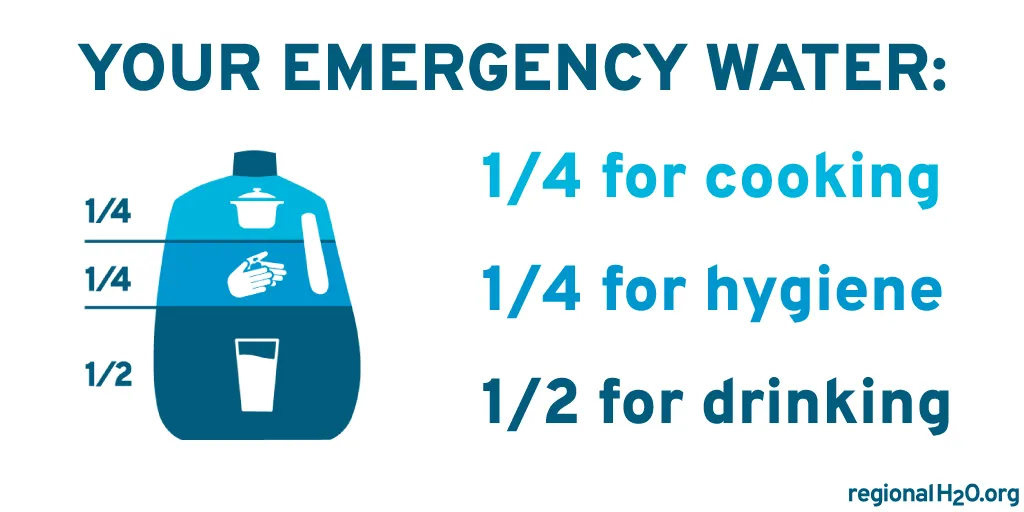
The general rule is to include one gallon of water per person per day in your emergency kit. That assumes about half a gallon for drinking. The rest of the water is for sanitation (like handwashing) and food preparation needs. You may need to include more water in your kit if your household includes people with special needs or pets.
| Number of people | 7 days | 14 days |
|---|---|---|
| 1 | 7 gallons | 14 gallons |
| 2 | 14 gallons | 28 gallons |
| 3 | 21 gallons | 42 gallons |
| 4 | 28 gallons | 56 gallons |
| 5 | 35 gallons | 70 gallons |
| 6 | 42 gallons | 84 gallons |
Special Considerations:
Pets
Be sure to include your pets when planning for your family’s emergency water needs. Check with your vet to find out how much water to store for your animal’s drinking and sanitation needs. You can also keep track of how much water you give your pets in a day. That will let you know how much to store. You will need some additional water in case they are injured or need to be cleaned. If officials declare your home’s water unsafe to drink, then it’s also unsafe for your pets. Read more about how to plan for emergencies with your pets in mind.
Pregnant Women & Newborn Children
You will likely need extra water for drinking, formula, and sanitation needs. Learn more about infant feeding in an emergency.
People with Access or Functional Needs
It is especially important that water be stored in a known, accessible place for people with disabilities. Individuals with limited mobility, sight, or ability to communicate should tailor their water storage to their specific needs. Store water in smaller containers that can be easily lifted and carried. Or, store water in larger containers that have a spigot so that you can get the water out of the container where it is located. Read more about emergency planning for people with disabilities in the Additional Needs section of PublicAlerts.org.
Take the Next Step
Storing water is just the first step in getting prepared for emergencies. Take the next step by visiting PublicAlerts.org for more emergency preparedness information:
- Make plans: Learn how to make emergency plans, choose emergency contacts, and practice your plans.
- Gather supplies: Find out how to make a 14-day emergency kit and what you should include.
- Sign up: Sign up to get emergency alerts by text, voice, email, or landline.
- Stay informed: Prepare different ways to communicate and get information following a disaster. A great addition to your emergency kit is a hand-crank radio, tuned to Oregon’s primary emergency alert station, OPB 91.5 FM.
- Have a toilet plan: Get the three steps to stay healthy if toilets aren’t working after a disaster.
- Build community: Find ways to connect before an emergency. When a disaster occurs, you and your neighbors will likely be the first to respond and provide help.
